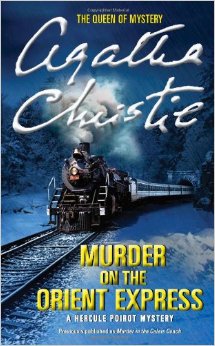What makes a mystery? The three main
characters help: The victim, the protagonist, and the villain.
The victim can be a nice person who
didn’t deserve to get murdered, or a vicious schemer that had folks
lining up to get a crack at him. What’s important from a plot
standpoint is that the victim has lived their life so that they die
NOW, at this particular place and time, and while in contact with a
particular group of people.
The protagonist, or detective – be
they a cop, private investigator, or amateur –
must
have a strong interest in solving this crime. A police officer would
have a strong professional interest. A PI would have both a personal
and a professional interest in solving the crime – the professional
because they’ve been hired; and personal because – as the story
progresses – they begin to care about avenging the victim or feel a
strong personal responsibility to the client. An amateur would
probably always be personal – to avenge someone they cared for, or
to clear their own name or the name of a loved one. If
the protagonist is given a strong motivation to solve the case, this
helps move the plot forward because it keeps the protagonist moving
forward.
And
the whole reason for the story: the murderer. There are all sorts
of killers, but in fiction we writers like to stick with the tried
and true: a serial killer, a murder for gain (money or love), or
someone who thinks they have no other choice. This is my personal
favorite and I find it most interesting. The person who commits the
crime has been driven to this point by circumstances so horrendous
that they thought murder was the only solution to their problem.
What
would motivate a person to be murdered? Or to murder? What are the
forces that drive a person? Is it money, love, security, or, most
likely, a combination of them all? How would this person react if
they were involved in a mystery? Would they be an active
participant, in either detection or deceit, or would they attempt to
extricate themselves from the situation? Is this a violet person or
a passive person? What
are this person’s interests and what do they tell us about the
character? What is their physical appearance and what does that tell
us about the character?
Agatha
Christie may have thought of the peculiarities of a twisty plot, but
to make it work she had to people it w/ characters that could live in
that plot. Example: MURDER ON THE ORIENT EXPRESS. I’ve no doubt
she thought of the clever twist as to who committed the murder before
she thought of the characters on that train, but once she decided on
that plot, she had to fill the Orient Express with characters who
were capable of living out that plot and making it as believable as
possible. Dame Agatha was a brilliant plotter, but she
concentrated more on twists designed to shock a reader than she did
on twists that emerged from the interactions of characters. Today’s
plots are centered more on the interactions of characters rather than
dependent on a cleaver means of killing a victim.
In
my own books, character has a lot to do w/ the plot. Milt Kovak is a
small town sheriff in Oklahoma, in a town he’s lived in all his
life. He knows just about everybody in town. In most cases he knows
the victim, and eventually, the murderer. The plot usually centers
on the murder itself – as in a police procedural – but with lots
of detours involving Milt’s many side characters – his staff at
the sheriff’s department, his wife and son, his sister, and
whatever else seems to be happening in Prophesy County, Oklahoma.
My
E.J. Pugh series is more traditional, or cozy if you will. E.J. is
an amateur sleuth whose first experience (ONE, TWO, WHAT DID DADDY
DO?) is gruesomely personal. Actually, all the books have a personal
interest for E.J., and many of them stem from something in my own
family's life – not that we've experienced any murders, but, hey,
what if?
In
a traditional mystery there is usually a strong link in life between
the killer and the victim. This immediately advances some of the
plot: What were the circumstances that led to the killer’s
decision to take a life? Was it an easy decision, a spur of the
moment decision, or an idea that went terribly wrong?
In
a mystery, the plot is the story. But it must ring true. Sometimes
it's hard for an amateur sleuth to continually stumble over dead
bodies and make that ring true, but there are other things in that
story that should – the amateur's reasons for investigating, their
knowledge of the victim, and their feelings about it. The truth is
what matters in any story, and there should always be a nugget that
our readers can take away.

Milt Kovak and E.J. Pugh sound interesting.
ReplyDeleteWelcome to Sleuthsayers!
Welcome to SleuthSayers!
ReplyDeleteIt is always a challenge, with an amateur sleuth, to find a way for them to run across a body that doesn't make them the Harbinger of Doom as soon as they show up in a town (I'm thinking Jessica Fletcher here).
I'll check out Milt Kovak and E. J. Pugh.
Welcome to SleuthSayers! I think you're right to draw attention to the problem of an amateur sleuth running into multiple murders. It's easy enough to imagine that an ordinary person might get drawn into investigating one murder--but two? more than two? dozens? And yet, as readers, we seem willing to suspend our disbelief again and again, as long as the mystery is believable in other ways, as long as the motives ring true and the characters seem real.
ReplyDeleteOne, two… off to read that too.
ReplyDeleteThanks, Susan!